#Palo Monte
Text
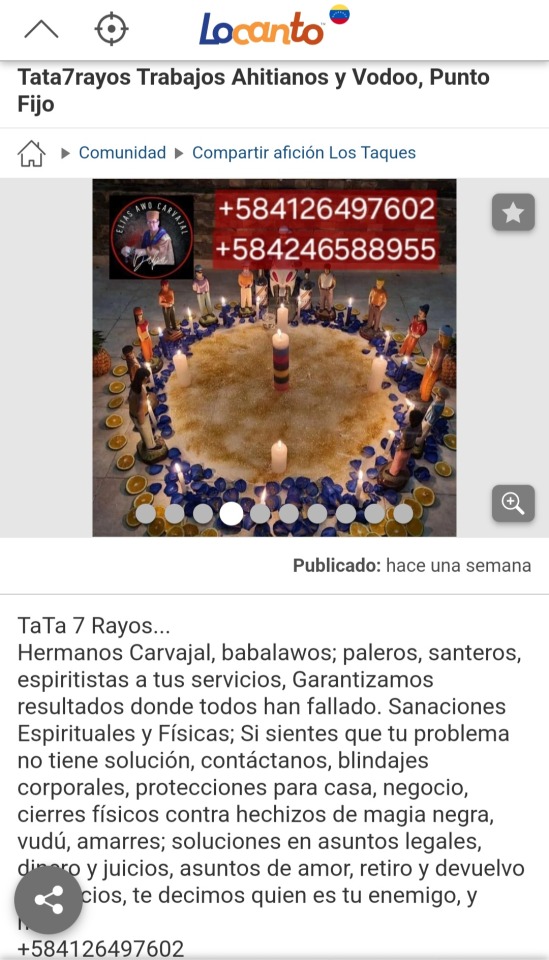
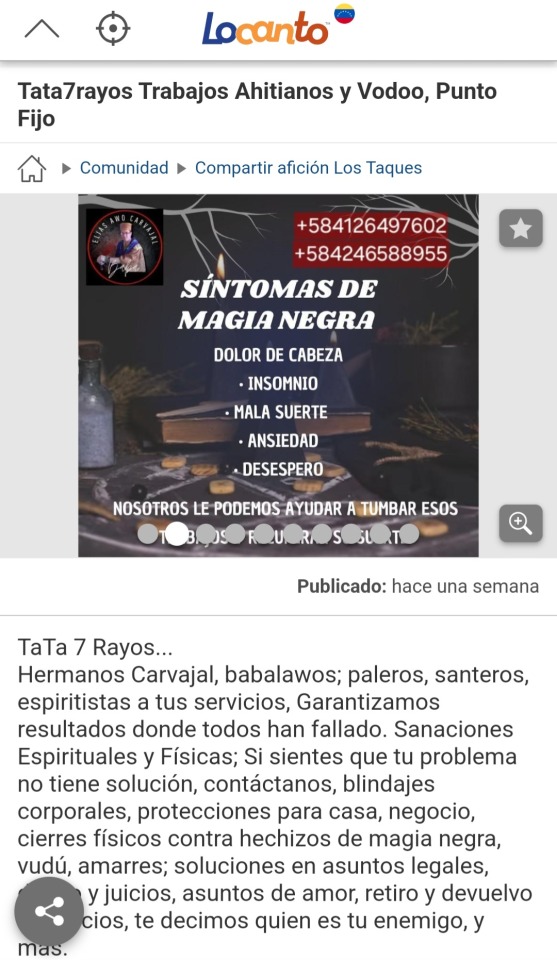
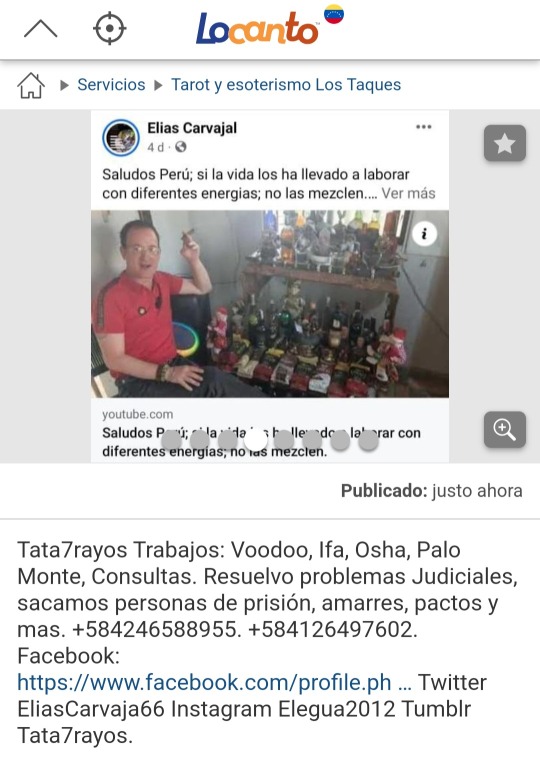

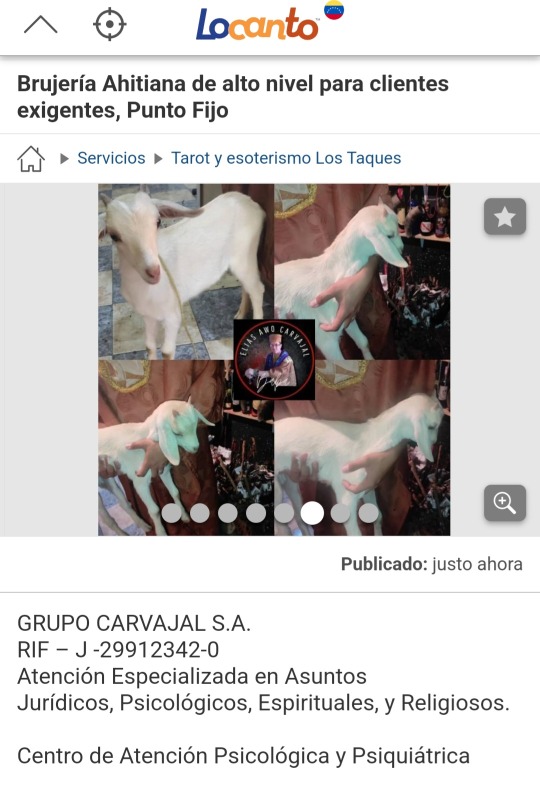

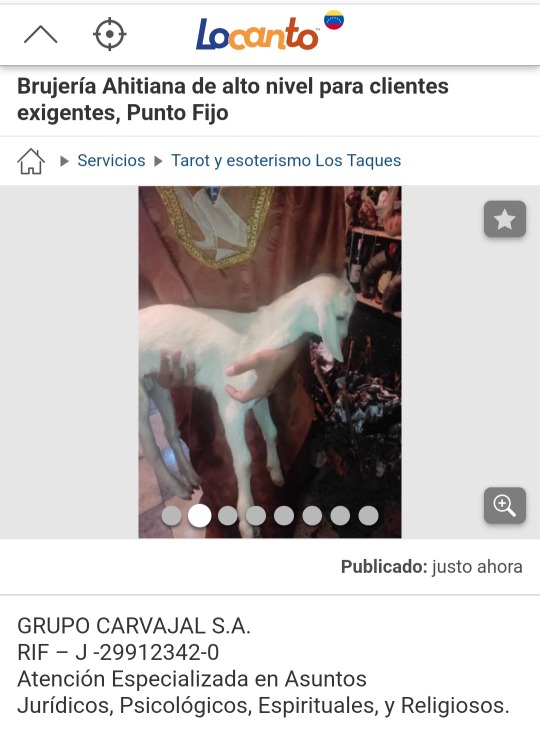
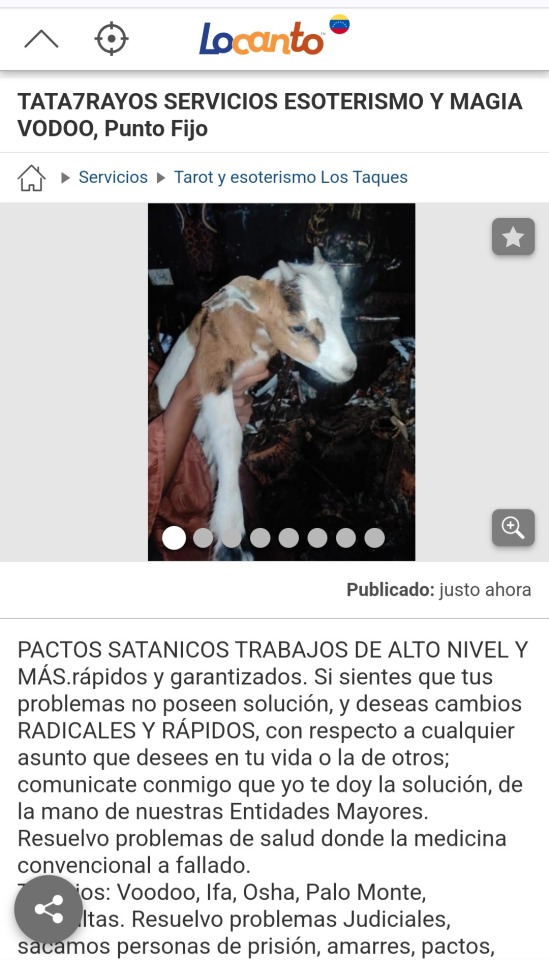
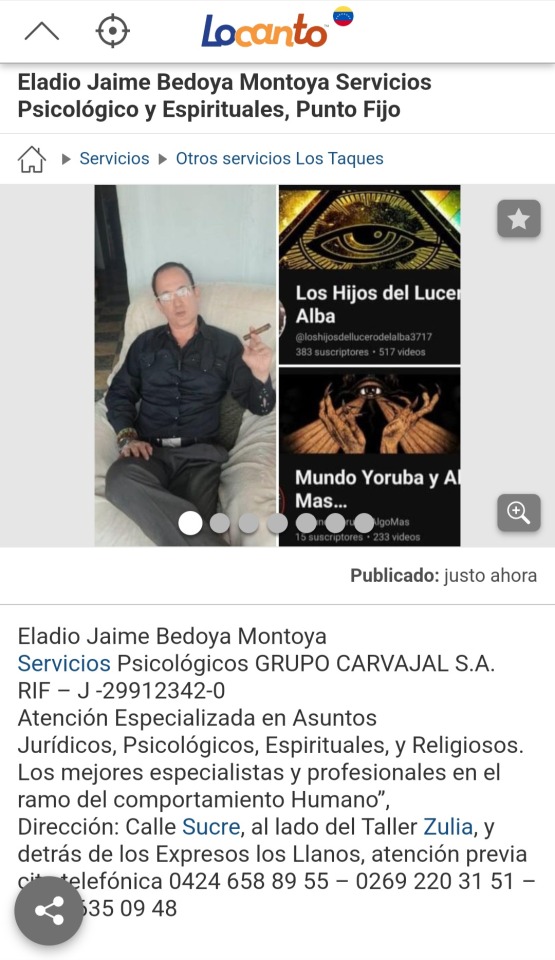

#Tata7rayos Trabajos: Voodoo#Ifa#Osha#Palo Monte#Consultas. Resuelvo problemas Judiciales#sacamos personas de prisión#amarres#pactos
1 note
·
View note
Text
Palo Mayombe: Kongo-derived Afro-Cuban Spirituality — Lawrence Talks!
“This complexity described in the Bantu-Kongo word for person, muntu is a ‘set of concrete social relationships ... a system of systems; the pattern of patterns in being.’ The person is contextualized as a system participating in other systems, a pattern, a ripple that is sourced and from a source.”
— Kimbwandende Kia Bunseki Fu-Kiau, African Cosmology 42
Dr. Kimbwandende Kia Bunseki Fu-Kiau, a Congolese native and scholar of African religion, captures the essence of Kongo cosmology with this quote, and from this cosmological structure lies the roots of the African diasporic religion Palo Mayombe. Just as a person is “a system of systems; the pattern of patterns in being,” ancestral reverence and inclusion positions humans through a multitude of bodies that have come before them. Ancestral veneration is at the core of many African Diasporic spiritualities. Many individuals who grew up in traditional Christian churches are leaving beliefs of Christendom in search for traditional religions that help them connect with their ancestors. Religious and spiritual systems like Ifa, Santeria, Vodou and Conjure have been popularized, sometimes in negative ways by the media, but for the most part these are the spiritualities that people turn to first in their exploration of African traditional religions (ATR). And what is known of Palo Mayombe by the general public is not a large amount of information by any chance. A Google search locates some articles which picture Palo as the “dark side” of Santeria, which is far from the truth. However, to understand Palo as a distinct spiritual system outside of other African diasporic religion, one must understand its BaKongo cosmological foundations.
History of ancient Kongo cosmology

Figure 1: Kongo cosmogram (dikenga)
Fortunately, there is a symbol that captures the essence of Kongo cosmology. The Kongo cosmogram is a cosmological symbol that represents the very patterning of the life process. This symbol is a pre-colonial representation of the cosmogram, as it was conceptualized before European colonization in 1482[1]. It is called the dikenga in the KiKongo language, literally meaning “the turning;” it stands for the cycling of the sun around four cardinal points: dawn, noon, sunset, and midnight when the sun is shining in the world of the dead. Composed of a cross, a circle, and usually arrows, this symbol was found in Kongo material culture well before the contact of colonial Christianity and its cross motif. Anthropologist Robert Farris Thompson, a scholar of Kongo art and religion, says that the “dikenga represents the ultimate graphic design, containing key concepts of Bakongo religious belief, oral history, cosmogony, and philosophy, and depicting in miniature the Bakongo conceptual world and universe” (Thompson 110). The key principle of the dikenga is that nothing ever survives “intact” because nothing ever survives in a fixed form. It is this spiral that is the basic element of Kongo spirituality.

Figure 2: Dikenga
In his seminal piece on Kongo cosmology entitled African Cosmology of the Bantu-Kongo: Principles of Life & Living, Dr. Fu-Kiau explains the motion of the dikenga as the process of ancestralization, of dying and being reborn as an ancestor, through the heating and cooling of existence. This explanation of death and ancestralization is at the core of Palo Mayombe.
Origins of Palo Mayombe
Palo Mayombe is a Kongo derived religion from the Bakongo Diaspora. This religion was transported to the Caribbean during the Spanish slave trade and sprouted in Cuba mostly and in some places in Puerto Rico in the 1500. As the enslaved were forced out of their homelands, their beliefs went with them. Spanish colonialists in Cuba initiated a strategy in the sixteenth century to create mutual aid societies, called cabildos or cofradías, which served to cluster Afro-Cubans into different ethnic categories. This was a strategy of “divide and rule” designed to foster social differences across groups within the enslaved population so that they would not find a unifying focus through which to rebel against the colonial government. In contrast to the extensive blending of diverse African cultures that would be seen in Haiti and Brazil, Cuban cabildos contributed to rich continuations of Yoruba culture in the development of Santería and to largely separate developments of BaKongo beliefs in Palo Mayombe (Fennel). Elements of Catholic beliefs were incorporated into both Santería and Palo Mayombe due to the imposition of the Spanish colonial regime and the cabildo system.
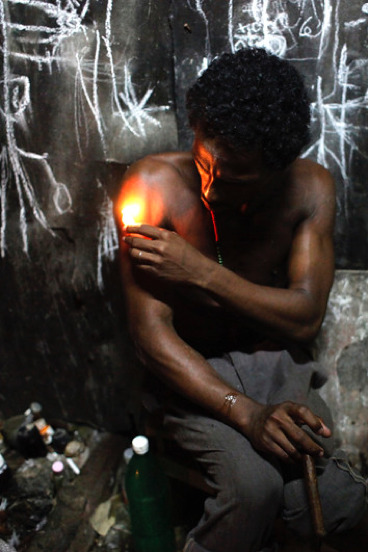
Figure 3 Palo Mayombe Ceremony
Palo Mayombe is very nature-based. Although most African Diasporic religions base rituals and practices in nature, palo (meaning “stick” or “segment of wood” in Spanish) solely depends on the material elements of nature to access the spiritual realm. In Cuba, the Kongo ancestor spirits are considered fierce, rebellious, and independent; they are on the “hot” scale of natural forces. Just as the importance of ancestralization mentioned above, the ancestors are present and inclusive in the practitioner’s life. Nzambi Mpungo is the greatest force in which paleros or paleras (Palo practitioners) call God. Nzambi Mpungo is literally the first ancestor, the initial iteration which all human life flows. Nzambi was viewed as having created the universe, people, spirits, transformative death, and the power of minkisi (ritualized, material objects). The Godhead was thus viewed as being removed from mortal concerns, and supplications were made instead to the ancestor spirits or the intermediary spirits created by Nzambi. Below Nzambi are the mpungus (elemental forces), the ancestors, and the spirits of natural forces (Bettelheim). Each mpungu is similar to an orisha from Yoruba culture due to shared African derived origins, but the two are not the same entity by any means. The mpungu are Afro-Cuban spirits, specific to their diasporic groundings and to the lands of the Diaspora. However, due to their origin
The material tools of Palo Mayombe
Cigars are used to enter into a trance-like state in order to more easily connect with spirits. Special machetes and chains are also used in spirit pots. Candles and rum are essential elements for any Palo ritual. The nganga is used to describe an iron cauldron filled with dirt and specialized sticks; this aids the palero/a in communication with the spirit. In Central America, Cuba and the Caribbean, this cauldron is called a Nganga-Prenda because the culture of modern day and the influence of Latin American's spiritualism in Palo Mayombe.
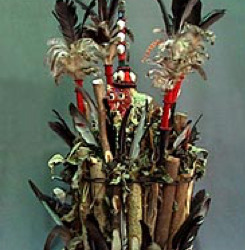
Figure 4: Prenda de Lucero
The Muertos are important entities in the Palo religion. The house of the dead is where the Palo spirits and the ancestors reside. As illustrated through the Kongo cosmogram above, Palo cosmology does not believe in death, but a continual cycle through various forms. It is the process of ancestralization that makes communication with the spirits of the dead accessible. In the Kongo tradition, ancestors, who have access to invisible forces, have the duty to protect the living. In exchange, the ancestor’s descendants have the obligation to take care of the ancestor’s memory and to venerate their earthly representation. This is why bones are another central tool in Palo. After a person has passed, the bones remain, and the bones carries the essence of a soul long after a person is gone. Bones are thus a sacred item in Palo Mayombe and are usually incorporated in Palo rituals. Usually an ancestor altar is an essential piece in the house of a palero/a, along with offerings of food, drink, and special itemize to venerate their ancestors.
Like many ATR’s and magical system, initiation of some kind is needed in order to practice. Guidance from the elders of the religion is highly encouraged, especially since the ways of the spiritual system is nothing like physical realms.
Palo Mayombe and Other Religious Connections
The influence of Palo Mayombe can be found in Central America, Brazil, and Mexico and in the United States. There are different sects of Palo (Palo Monte, Christian-based Palo, Jewish-based Palo) that come from different lineages and distinct engagements with the cultural environment around the practice. There is another Kongo-derived religion in Brazil is Quimbanda, which is a mixture of traditional Kongo, indigenous in India and Latin American spiritualism. Palo Mayombe is the engagement of Kongo influence in the Caribbean and the wider Diaspora. It has its own priesthood and set of rules and regulations. Rules and regulations will vary according to the Palo Mayombe house to which an individual has been initiated into.
Some people who practice Palo might mix other African-derived systems, like Ifa, Vodou, or Santeria, but Palo is a religion in its own right. For example, Yemoja, the orisha of the ocean and motherhood, may be seen as the same energy as Madre de Agua, the mpungo of the ocean and of motherhood. Although these spirits may have similar functions within the religions, they are two separate entites from particular cultural origins and with specific needs. It is quite common for spiritual seekers to be initiated in multiple religions, so it is of great importance to make sure each path is approached. Although there are other religious elements in Palo, it is all included in the practice and not separated within the religion. When Portuguese missionaries brought the message of Christianity to the Kongo/Bantu, the natives embraced it…while continuing their own native practices (Jason R. Young, Rituals of Resistance). So, this pattern of centripetal inclusion is also present in Palo Mayombe. As Iya TeeDee Oshún, a priestess of African diasporic religions, commented in a recent Facebook post:
“Palo is a beautiful road for those of us that it is for. It's also not just some shit you get done real quick before you ‘elevate’ because that's what Iya's spirit guide said to her in the shower. (Not making that up at all.) It's definitely not Iya nor Baba's "witchcraft pot" in the closet or behind the washing machine or above the grease stain in the garage. It's rarely what I hear when people talk to me in Yorabalese” (2019).
Iya’s mention of “Yorbalese” speaks to a common trend of people in the Diaspora making all of African-derived religions about orisha Ifa/Nigeria, but Palo is of the BaKongo Diaspora. The only system close in origin and practice to Palo is African American Hoodoo, which uses similar elements of the heating and cooling of herbs in spiritual work.
Conclusion
When one decides to take a step into the spirituality of Palo Mayombe, the journey really is a deep engagement with their ancestors and with the raw elemental forces of nature. It is a spiritual awareness that provides protection for the community and the self. The ancestors are the root of one’s existence; the root is the culminating point from which all life springs. This Afrocentric view of cosmology in which Palo Mayombe is grounded, deals with the consciousnesses of nature and of ancestry. Anyone who claims Palo Mayombe as a “dark” or unorthodox religion does not understand the Kongo origins of which Palo operates.
[1] The Kongo cosmogram is a pre-Christian symbol, but due to the iconography of the Christian cross, many people overlap their meanings
#Palo Mayombe Kongo-derived Afro-Cuban Spirituality#Palo#ATR#Congo#African Cosmology#Ancestry#African Religions#IFA#Palo Monte#Kongo
1 note
·
View note
Text
So it's been a while since I've watched videos about ATRs on youtube, and let me just say, it's full of even more garbage than before.
This was not necessarily the case about five years ago--Yes, there were frauds and garbage documentaries about African religions, but you could also find good documentaries and legitimate ceremonies on that platform if you searched a little. Not now, apparently. I don't know what happened within the past five years, but the influencers have somehow gotten a hold of tatas, santeros, macumbeiros, and pais de santo and are wreaking absolute havoc.
Is it the algorithm? Is it because tiktok found African Religion? Is it because of the pandemic?
I legitimately don't know, but good luck finding any reliable information there. There are still legitimate sources on Haitian Vodou, but with any other Afrolatino ATR, all bets are off. It's sad, actually--Anyone who wants to connect with any of these religions in a credible way should be able to, and modern technology should act as a facilitator for that rather than a hindrance. But, with a long sigh, I say that I guess it's just the world we live in now. Absolute hellscape
0 notes
Photo

(vía Palo Monte Venimos de Kongo)
0 notes
Text
Rip mi familia pero soy diferente
#Al revés en realidad rip para mí#No sobreviviría en el monte ni a palos#No solo x lo q para mi seria aburrido ni tampoco por todo el laburo q puede haber sino xq tengo un cagaso tan grande como una casa#Demasiadas historias de terror para mí chiquissss ahora no voy a poder dormir
0 notes
Text
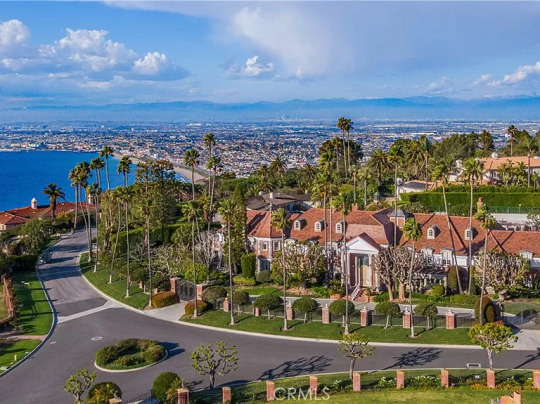
Welcome to what the ornate decor of wealth looks like when it gets dated. It's unchanged since 1986 when the mansion in Palos Verdes Estates, CA was built. It has 9bds, 18ba, $8.9M. And, it's under contract. The exterior is so beautiful, but it needs a little oomph inside.

Very elaborate entrance hall with teal Greek columns.
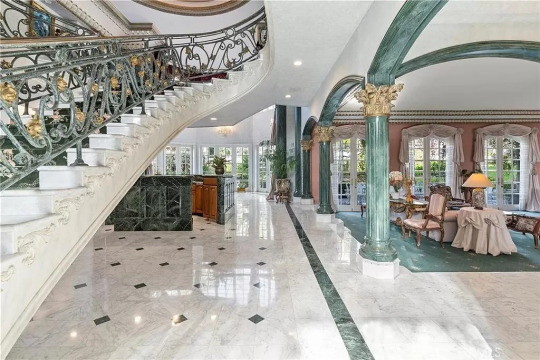
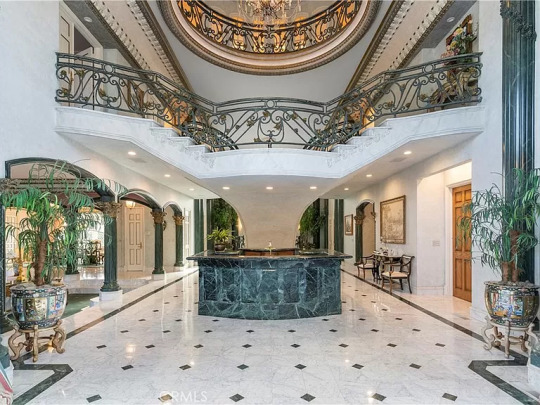
On the other side of the stairs there's what looks like a hotel reception desk.
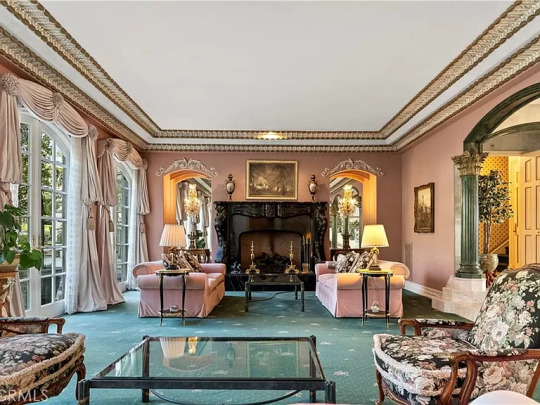
The sitting room needs a refresh. This home has huge fireplaces, but the decor and carpeting look tired and dusty. They'll be taking their furniture and I would freshen this room with new paint.
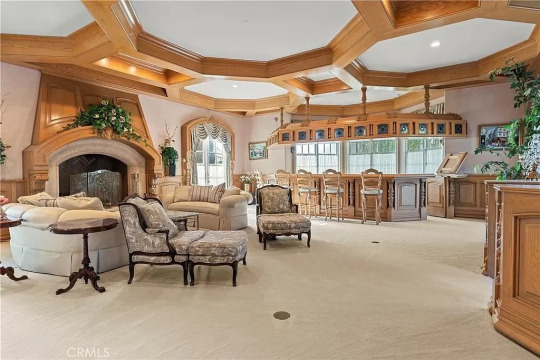
In the lounge there's a very large fireplace and the largest beams on an octagon coffered ceiling I've ever seen. There's also a bar. I think that those round disks in the floor are plugs, so I would place my furniture accordingly.
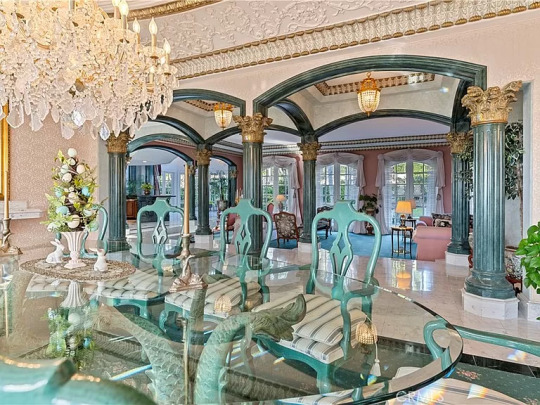
I wonder if the new owners plan to spend some more millions on updating the place.
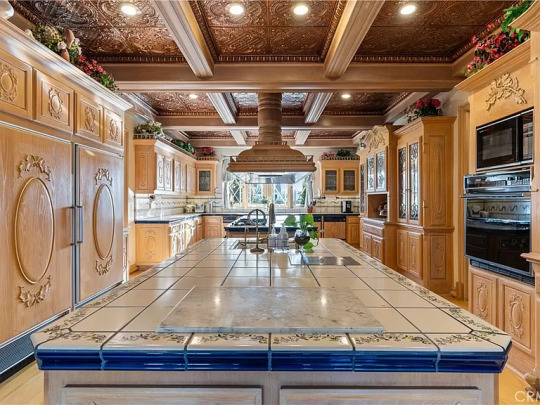
The kitchen is gigantic and has carved cabinet fronts plus brown Victorian tin between the coffered beams.
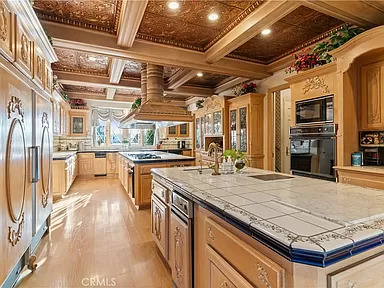
There are 2 very large islands and built-in glass china cabinets. The countertops are tile.

The breakfast room has a fireplace, built-in cabinet and a painted sky ceiling.
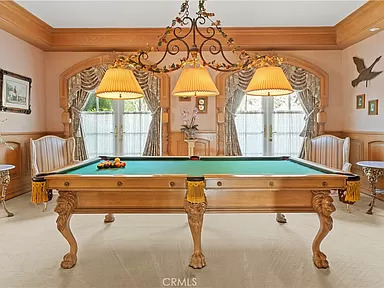
I don't care for the pool room's decor. I would make it more man cave and ditch the pink.
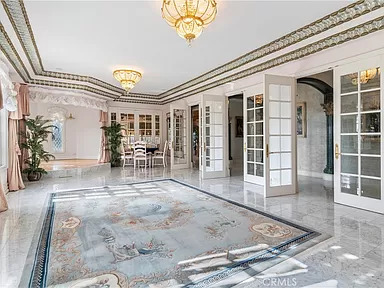
Ballroom?
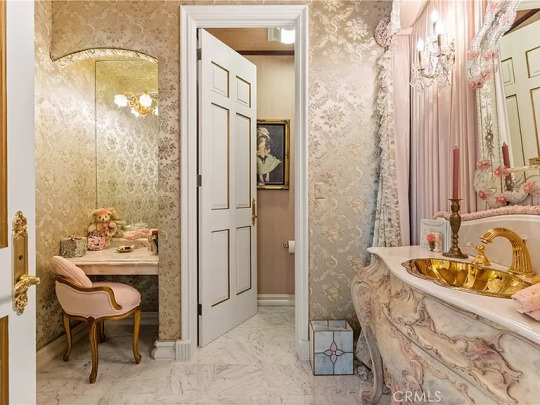
Powder room is interesting.
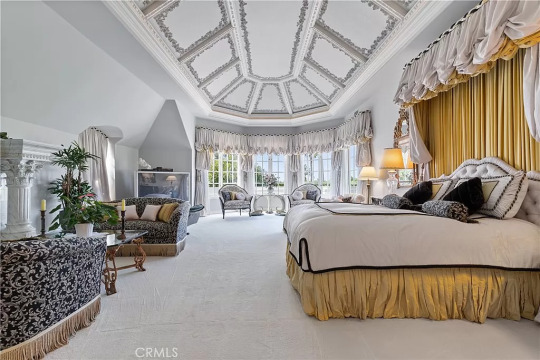

The primary bedroom is very large and so is the fireplace.
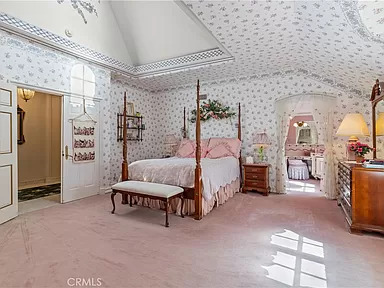
Look at how high that ceiling goes in this room.

Check out this en-suite. A maroon tub and sink.

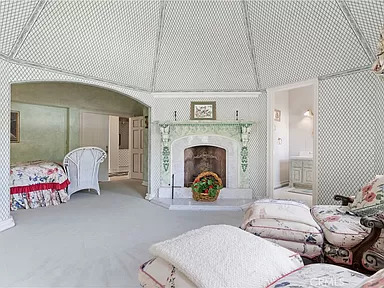
I think that this bedroom has an outdoor theme. The wallpaper is like simulated lattice and the fireplace looks moldy, even though it's just a paint effect.
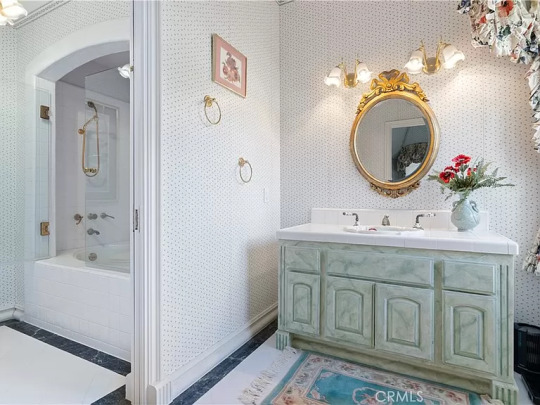
In the en-suite the sink vanity has a faux marble finish.
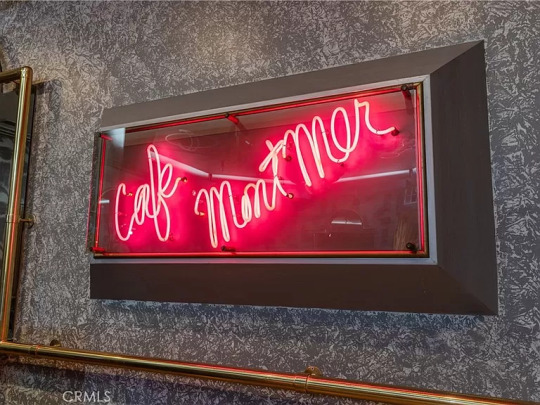
We're back downstairs in Cafe Montmer (or is it Mont Mer?).

This must be a game room or rec room.
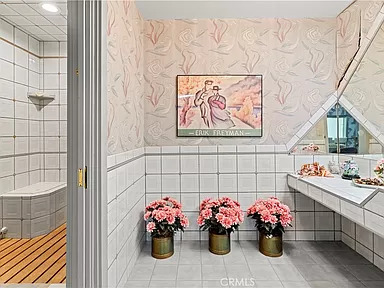

The Cafe Mont Mer guest bath and sauna.
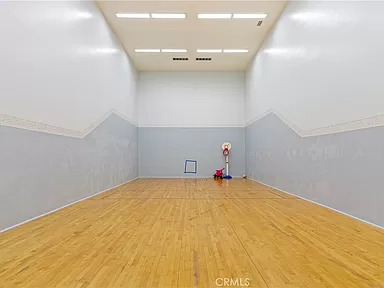
Handball court?
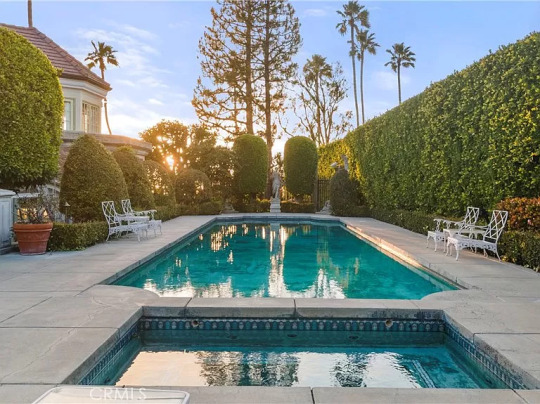
The pool and patio.
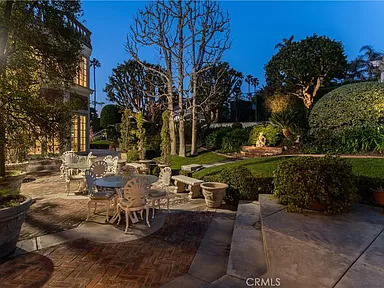
The grounds are beautiful.
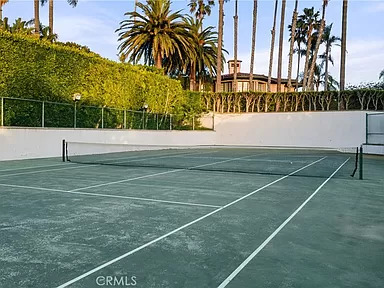
Also a tennis court.

The gated 1.24 acre lot has a view of the Bluff Cove which is practically across the street.
https://www.zillow.com/homedetails/1804-Via-Visalia-Palos-Verdes-Estates-CA-90274/21342903_zpid/?
101 notes
·
View notes
Text
Resources for Cuban and Caribbean Folk Magic 🇨🇺
Disclaimer: Cubans are not a monolith so when we say ‘Cuban Folk Magic’ its like saying ‘American Folk Magic’ in the sense that it is a BROAD term that includes multiple different cultural threads and traditions. Start by researching your ancestors and where they were from as a jumping off point.
Also, many of these resources are not Cuban themselves, but they either share the same practices or are academic or general sources. I have made it clear when a source isn’t Cuban. For this reason, I have expanded it to be the Cuban AND Caribbean Folk Magic List.
The List
Creators:
Irka Mateo - Taino - Insta 🇩🇴
Religion.Ancestral.Taino - Insta 🇵🇷
Sancista Brujo Luis - Espiritismo/Taino-Youtube | Blog 🇵🇷
OkaniLuna - Brujería/Taino - Youtube🇩🇴
Juliet Diaz - Brujería/Taino/Author - Instagram 🇨🇺
Sancista 7 Espadas - Espiritismo - Insta 🇵🇷
Odofemi - Regla de Ocha - Tumblr 🇺🇸
Eve the Medium - ATR/Espiritismo - Youtube 🇩🇴
Yeyeo Botanica - ATR/Espiritismo- youtube 🇺🇸
Botanica Candles & More - Great Podcast!! - youtube 🇨🇺 🇺🇸
Connecting w/ Guides and Goals by Adunola - youtube 🇺🇸
Articles
San Lazaro - Wikipedia - Novena - Yeyeo Botanica
Caridad del Cobre - Wikipedia
Orisha and Palo Herbs Directory- Website
Ewe (Herbs) Photo Guide - Website
Pueblo Originario Taino Section - Website
Taino and Agua Dulce essay by Jorge Estevez - Link
Books:
Taino Library* - Amazing resource for books of all kinds, many books about Taino, Cuban and Caribbean Spiritualities, Folklores and Songs! Multiple books on Cuban Myths and Folktales! Highly recommend - Website 🇵🇷
Espiritismo by Hector Silva🇩🇴
A Year in White by C Lynn Carr
The Modern Art of Brujería by Lou Florez(VERY BASIC just as a general introduction to what alot of modern Folk Practices look like)
American Brujeria by J. Allen Cross 🇲🇽🇺🇸
El Monte by Lydia Carbera 🇨🇺
Movies and Videos:
Cecilia (1982) - Youtube
Las Profecias de Amanda - Youtube
Susie Jim Billie, Medicine Woman Interview - Link
This list will grow as I find more resources that are reliable enough to share. If you have recommendations or would like to be added, please reach out.
Luz y Progreso 🕯️
(I also have included a Research Guide below the Cut!)
Guide to researching based on your ancestry:
If your family has African roots, you can seek Ocha/Lukumi, Palo, Arara, Cuban Vodou and other African Traditional Religions and Practices. Please approach elders within these respective practices to further your connection to them, rather than using books to create a practice for yourself. These are ancient, community based and are lifelong commitments, not just trendy powerful spells for you to get what you want.
If your family has indigenous roots, research Taino spirituality and modern practices , but also know that there were other tribes in the western and centeral parts of Cuba, with their own languages and traditions you can still learn about like the Guanahatabey. You may also consider joining a Yukayeke, but this isn’t required. Reconnecting and decolonizing is a separate and important topic that is not inherently witchcraft or folk magick-y… HOWEVER, researching and informing yourself with these practices can help you to see their influence within modern folk practices.
If your family has Asian roots, research the buddhist cults and folk practices throughout Cuba! Believe it or not, we also have people of Middle Eastern descent in Cuba who brought with them their own Hindu and Arabic Folk Traditions, which can be found throughout Cuba and the Caribbean as a whole.
If your family has Spanish roots, research some open practices like Espiritismo and Folk Catholicism! Look into the Patron Saints of Cuba, La Virgen de La Caridad del Cobre and San Lazaro. These also tie in to many of the other cultures who were forced to adopt certain elements to ensure survival of their traditions! You can also look into Brujería. Much like modern witchcraft, modern brujería has been commodified to hell and back, but there is still some great knowledge and power to be found there.
The fact of the matter is, that most of us can fit ourselves into two or more of these categories, and this crossover is where Folk Magic is often born. Its also important to note, in alot of these traditions you shouldn’t learn or share certain things at certain times, so some sources who share too much about Ocha and other ATRs should be avoided. Also, I can’t stress how important it is to talk to your family! Ask them about folklore or legends and stories! Also research history and folkore of the specific areas in Cuba your family is from. A-lot of folk magic is incorporated into stories.
Bendiciones, good luck on your Journey!🦎🐊

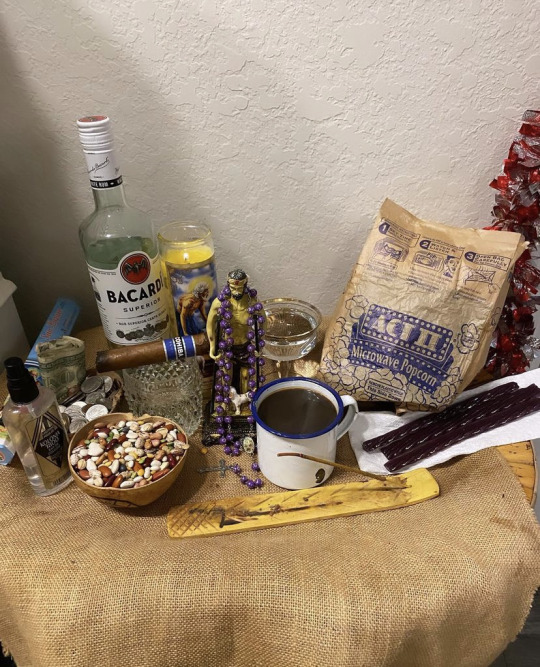
47 notes
·
View notes
Text
Mi compa está en modo bruja porque una vieja en el monte le dió unos yuyos. Pero resulta que los guardo todos juntos y los "clasificó" una vez secos. Entonces ahora tiene algo que dice stevia, pero no es stevia ni a palos, porque incluso seca la stevia es muy dulce y esto tiene gusto a té
#o sea#casa uno con su mambo#pero se jacta de que es la piba de los yuyos#y no los tiene bien clasificados ni a palos#cosas de la convivencia
2 notes
·
View notes
Text
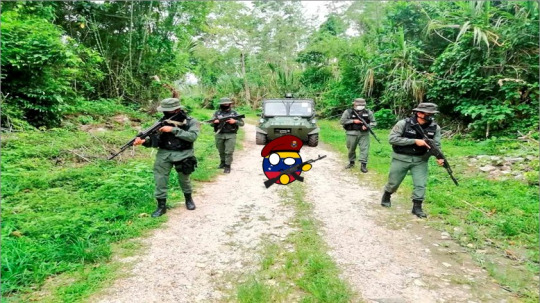
Venezuelaball: m*rik0 nos robaron la gasolina.. ahora que hacemos en este monte? ahora tamos baraos
*Eso les pasa por jugar counter strike con los palos de mango de la selva:v*
2 notes
·
View notes
Text
⭐Tata7rayos ▪︎Trabajos: Voodoo, Ifa, Osha, Palo Monte, Consultas. Resuelvo problemas Judiciales, sacamos personas de prisión, amarres, pactos y mas. +584246588955. +584126497602. Facebook:
https://www.facebook.com/profile.php?id=100011790192087 Twitter EliasCarvaja66 Instagram Elegua2012 Tumblr Tata7rayos.
2 notes
·
View notes
Text
youtube

Release: October 25, 2013
Lyrics:
Io, io
Dale duro a ese pilón, io, io
Que se acabe de romper, io, io
Que en el monte hay mucho palo y mi papá lo sabe hacer
Io, io
Ya me duele la cabeza, io, io
De tanto darle al pilón, io, io
Para engordar un cochino y comprarme un camisón
Io, io
Allá arriba, en aquel cerro, io, io
'Tá un matrimonio civil, io, io
Se casa una bemba en burro con el pescuezo e violín
Io, io
Io, io
Y la zoqueta se cree, io, io
Que todo se lo merece, io, io
Y vive en un peazo de rancho que el viento se lo estremece
Songwriter:
Io, io
Yo no quiero hombre casao, io, io
Porque hiede a mata dura, io, io
Yo quiero uno solterito que huele a piña madura
Io, io
Steven Sugar / Mike Milk / Steve Vanderberg
#Youtube#Spotify#Milk & Sugar#Canto del pilon#Maria Marquez#hit of the day#music#music video#video of the day#youtube video#chaos radi o#good music#2010s#2010s music#2010s charts#2013#dance#dance electronic#house#electronic#lyrics#494
2 notes
·
View notes
Text
LAS PIEDRAS SAGRADAS DE LA SANTERÍA
En las culturas afroamericanas las piedras tienen un significado mágico, principalmente entre los grupos de origen yoruba, cuyo sistema religioso es la Regla de Ocha, pero que es más conocido como la santería. También en la Regla de Palo, que es de origen bantú, las piedras son relacionadas con los hombres.
Los otanes ( piedras ) son objetos que simbolizan el poder sobrenatural del orisha al que se le rinde culto.
Los yorubas les confieren una acción determinante a las piedras sagradas, que se denominan otanes. En las piedras de unidad monolítica se asienta el alma de los dioses u orichas; las piedras atrapan el poder y es desde donde emanan sus energías que influyen en la vida de los creyentes ayudándolos a vencer las adversidades y facilitándoles su mejor desenvolvimiento. Los santeros o cariochas adorarán dichas piedras para siempre.
Las piedras u otanes son seleccionadas por los sacerdotes o padrinos expertos en descubrirlas. No hay que confundirse, se pueden hallar un pedazo de muro de cemento o de concreto o un turrón de arena; ésas no son piedras. Se eligen de acuerdo con su aspecto, su color, su forma y el lugar en donde fueron halladas, ya sea en una montaña, en la superficie o desenterrándola de los brazos de Oggedé (la tierra). Para que sean aprobadas hay que preguntarles a los santos si cada una posee las condiciones interiores requeridas. Esta pregunta se hace por medio del oráculo de Biagué o de los cocos. Si alguna de las piedras resulta desaprobada en esta consulta, debe ser sustituida por otra.
Todas las piedras aprobadas pasarán después por un ritual de requisito, que es “el lavatorio”, en el cual son purificadas por el lavado en omiero acompañado de una letanía de cantos de Osain entonados por un coro de santeros sentados en semicírculo y dirigidos por el obbá. (El omiero es una sustancia líquida compuesta por aguas místicas, yerbas de fundamento y otros ingredientes secretos que este autor no puede revelar). El olor que desprende el omiero en movimiento y el esmero con que son tratadas las piedras por los santeros crean una atmósfera litúrgica donde se van liberando las fuerzas de la naturaleza y se experimenta una sensación indescriptible.
ORICHAS Y OTANES
Cada uno de los orichas o dioses tiene sus propias piedras:
֎ ELEGGUÁ: lleva una piedra triangular de camino interna, sepultada en su figura de cabeza amasada con diferentes tierras, veintiún elementos vegetales y metales.
֎ OGGÚN: en su olla de hierros con siete instrumentos que representa el martillo, el yunque, el azadón y los clavos de vía, va la piedra de ogundá, que es traída del monte.
֎ OBATALÁ: en su sopera se depositan sus cinco piedras blancas calcíneas, cuatro son de Obatalá y una más achatada es de Oggé, a veces va envuelta en algodón y cascarilla.
֎ OCHÚN: lleva cinco piedras redondeadas tomadas de un río. Las llaman chinas pelonas, pero realmente se llaman ocheotan
֎ YEMAYÁ: se fundamenta con siete piedras. En Cuba se toman también de río; en Brasil y en Trinidad exigen que sean marinas. Son más porosas que lisas y se les llama oddiotan.
֎ OLOKÚN: lleva diversas piedras del fondo del mar junto con caracoles y conchas. Tradicionalmente se le ponían perlas, corales y hasta monedas antiguas.
֎ OYÁ: contiene nueve piedras arcillosas y marmóreas, con vetas rojizas y moradas, y se les llama osaotan.
֎ CHANGÓ: en su batea de madera se colocan seis otanes negros y alargados. También le pertenece la piedra del rayo, Obbaraotan.
Los collares que usan los santeros como protección también son piedras cristalinas, de diferentes vetas minerales, pues las cuentas de los collares nunca pueden ser de plástico. También deben pasar por un proceso ritual. Los collares o eleques son representaciones de los orichas y los otanes son el recinto donde habitan en esta tierra.
LAS PIEDRAS Y SUS ATRIBUTOS
† Piedra del rayo. Es un monolito negro alargado y más picudo por uno de sus extremos. Algunos afirman que cae con el rayo, pero lo cierto es que debido a su energía magnética produce descargas eléctricas durante las tormentas. Ha sido usada como hacha por los grupos aborígenes del Caribe, como los siboneyes y taínos, y aparece en Cuba, Venezuela, Puerto Rico y República Dominicana.
† Piedras preciosas. Los cristales son de agua y otros líquidos fosilizados. Desde tiempos remotos se tuvo la costumbre, en casi todas las civilizaciones, de ornamentar a las autoridades, como jefes, caciques y reyes, con piedras cristalinas que representaban el poder, tales como esmeraldas, rubíes y diamantes, los cuales se constituían en tesoros del reino y le daban fuerza económica.
† Ámbar. Es una piedra resinosa de alta frecuencia magnética. Fue muy importante para el descubrimiento de la electricidad. Pertenece a Ochún; es una piedra del amor y atrae la felicidad. Los zares de la antigua Rusia lo usaban como talismán.
† Azabache. Fue muy estimado por las antiguas civilizaciones árabe y judía. Protege a los niños del mal de ojo y aleja las maldiciones. Pertenece a Elegguá. Es una piedra vegetal muy valorada.
† Piedra volcánica. Se forma cuando la lava incandescente se enfría, petrificándose. Pertenece al dios Argayú, que es el patrón que premia el esfuerzo y trae la prosperidad. Nos advierte de las pérdidas.
† Cuarzos. Los cuarzos blancos y opalinos pertenecen a Obatalá. Regulan el equilibrio nervioso, fortalecen la memoria, aclaran la conciencia y traen la paz. Los cuarzos violáceos le pertenecen a Oyá y los rosas a Naná Burucú, que tiene la capacidad de eliminar las infecciones renales y mejorar la circulación. Tiene alta composición de magnesio.
† Turquesa. Es de las más antiguas piedras preciosas. Había un viejo refrán español: “una mano con turquesa no conoce la pureza”. Pertenece a Yemayá y protege el hogar y la familia.
† Lapislázuli y zafiro. Pertenecen a Olókum, que es un dios parecido a Neptuno, y aseguran la prosperidad económica. Se les considera piedras masculinas.
† Esmeralda. Son piedras que pertenecen al dios Oggún. Es suyo el poder de premiar el esfuerzo y ayudar a vencer a los enemigos. Protege la industria y la productividad.
† Granate. Es una piedra de Changó y procura el éxito y el triunfo en los negocios. Changó fue un soberano del pueblo de Oyo; es dios del fuego.
† Ágata, aguamarina y amazonita. Se consagran a Obbalantobaro, que es la unión de Las Siete Potencias africanas. Alejan la maldición y rechazan las malas intenciones enviadas por alguien.
† Obsidiana. Es un mesolito de origen volcánico; piedra muy cortante que en el mundo prehispánico se utilizó para construir puntas de lanza y los cuchillos con que se hacían sacrificios humanos para los dioses aztecas. En la santería se le considera un arma de Ochasi y el cazador.
† Topacio. En la santería se le atribuye al dios Inle, que es el médico divino y dueño de la pesca. Impide el acontecimiento de enfermedades.
El hombre soñó con la piedra filosofal y añoró que ésta le diera respuesta a las inquietudes de la vida, y plasmó esta búsqueda en obras literarias fantasiosas. Sin embargo, por medio de las piedras podemos obtener información histórica sobre la geología, los accidentes y fenómenos del planeta.
La naturaleza nos concedió además el aire, el agua y los alimentos para sobrevivir... lo mismo que la energía de las piedras. Cuando Olofi los alcanza con sus rayos divinos desde Olórum las convierte en sagradas, por eso agradezcamos su enseñanza y su protección cuidando del equilibrio ecológico que las sustenta.
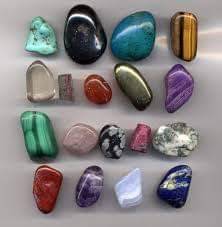
7 notes
·
View notes
Photo

(vía Palo Monte Practicas rituales y fetiches)
0 notes
Text
Transform Your House with These Easy House Renovation Ideas
""
Home renovation can be a challenging task, yet it does not need to be. With a little creative thinking as well as effort, you can transform your residence right into an attractive and useful area that you'll love investing time in. Here are some very easy house improvement suggestions to get you started.First, consider adding a fresh coat of paint to your walls. This can quickly cheer up a space and also make it really feel extra sizable. You can also switch over out your old light components for brand-new ones to update the look of your room. One more easy upgrade is to replace your cabinet equipment with something more contemporary and also trendy. These little changes can make a large effect on the total look of your residence. Another house improvement task that can include worth to your
home is upgrading your kitchen or restroom. This doesn't need to be a significant improvement, however can be as easy as replacing outdated appliances or fixtures. You can likewise add some new ceramic tile or a backsplash to give your space a fresh new appearance. Ultimately, don't ignore the outside of your home. Adding some potted plants or flowers to
your porch or outdoor patio can create an inviting entry. You can also upgrade your landscape design or add a fresh layer of paint to your front door to provide your residence some visual charm. With these simple home improvement ideas, you can transform your residence right into an area you'll like.
Read more here Top Contractors for Adu in California Experienced Contractors for Adu in Ontario California Adu Westlake Village, Adu Hidden Hills,Adu Calabasas, Adu Santa Monica,Adu San Fernando,Adu Beverly Hills, Adu Santa Clarita, Adu Culver City,Adu West Hollywood,Adu Rancho Santa Clarita,Adu El Segundo, Adu Burbank Junction, Adu Inglewood, Adu Manhattan Beach,Adu Hawthorne,Adu Hermosa Beach, AduLawndale,Adu Glendale Los Angeles, Adu Redondo Beach, Adu Los Angeles,Adu Gardena, Adu Palos Verdes Estates,Adu Torrance,Adu Vernon,Adu La Canada Flintridge, Adu Rolling Hills Estates,Adu South Gate,Adu Rancho Palos Verdes,Adu Carson, Adu Lynwood, Adu Maywood,Adu Bell, Adu Lomita, Adu Rolling Hills, Adu South Pasadena,Adu Compton, Adu Cudahy, Adu Pasadena,Adu Walker,Adu Commerce,Adu Alhambra, Adu Stoneman, Adu Bell Gardens, Adu Monterey Park, Adu San Marino, Adu San Gabriel,Adu East Pasadena,Adu Paramount,Adu Downey, Adu Montebello, Adu Pico Rivera, Adu Rosemead,Adu California Heights, AduTemple City, Adu Sierra Madre, Adu Santa Anita, Adu Santa Fe Springs, Adu Bellflower, Lakewood, South El Monte, Long Beach,Adu Arcadia,Adu Norwalk, Adu El Monte,Adu Dolley,Adu Artesia, Adu Whittier, Adu Monrovia, Adu Cerritos,Adu Hawaiian Gardens,Adu Duarte,Adu Bradbury,Adu La Mirada, AduBaldwin Park, Adu Industry,Adu La Puente, Adu West Covina,Adu Irwindale, Adu Palmdale, Adu La Habra Heights, Adu Azusa,Adu Covina, Glendora, Walnut, Adu Lancaster, Adu San Dimas, Adu Diamond Bar,Adu La Verne,Adu Pomona, Adu Claremont,Adu Avalon Agoura Hills
#adu construction contractors near me#afordable adu contractors in Ontario California Top Contractors for adu in California#adu companies in Ontario California
2 notes
·
View notes
Text
2022-23 Montreal Canadiens Roster
Wingers
#11 Brendan Gallagher (Edmonton, Alberta) A
#17 Josh Anderson (Burlington, Ontario)
#20 Juraj Slafkovský (Košice, Slovakia)**
#22 Cole Caufield (Mosinee, Wisconsin)
#27 Jonathan Drouin (Sainte-Agathe-Des-Montes, Quebec)
#40 Joel Armia (Pori, Finland)
#41 James Byron (Ottawa, Ontario)
#55 Michael Pezzetta (Toronto, Ontario)
#63 Yevgeni Dadonov (Chelyabinsk, Russia)*
#68 Mike Hoffman (Kitchener, Ontario)
Centers
#14 Nick Suzuki (London, Ontario) C
#28 Christian Dvorak (Palos Township, Illinois)
#71 Jake Evans (Mississauga, Ontario)
#77 Kirby Dach (Ft. Saskatchewan, Alberta)*
#91 Sean Monahan (Brampton, Ontario)*
Defensemen
#6 Chris Wideman (St. Louis, Missouri)
#8 Mike Matheson (Pointe-Claire, Quebec)*
#21 Kaiden Guhle (Sherwood Park, Alberta)
#26 Johnathan Kovacevic (Niagara Falls, Ontario)**
#6 Joel Edmundson (Brandon, Manitoba) A
#54 Jordan Harris (Haverhill, Massachusetts)**
#58 David Savard (Saint-Hyacinthe, Quebec)
#72 Arber Xhekaj (Hamilton, Ontario)**
Goalies
#31 Carey Price (Anahim Lake, British Columbia)
#34 Jake Allen (St. Stephen, New Brunswick)
#35 Sam Montembeault (Bécancour, Quebec)
#Sports#Hockey#Hockey Goalies#NHL#Montreal Canadiens#Celebrities#Canada#New Brunswick#Ontario#Finland#Wisconsin#Alberta#Russia#Quebec#Illinois#Manitoba#Massachusetts#British Columbia#Slovakia#Missouri
2 notes
·
View notes
Photo

"¡Lando Norris y su Lamborghini Miura son Empujados por Fans en Monte Carlo! ¡No Creerás lo que Sucedió!" - ¡Hola a todos! ¡Vamos a hablar del incidente del Lamborghini Miura de Lando Norris en Monte Carlo! #AutomotiveLove Aquí vamos. El Lamborghini Miura, uno de los #SuperCoche más codiciados en la historia del automóvil, conocido por su glorioso diseño de los años 60 y su poderoso motor V12, fue intentado arrancar en la lujosa ciudad de Monte Carlo por el corredor de F1 Lando Norris. Pero parece que el viejo Miura necesitaba un poco de cariño, ¡no arrancaba! Ahora, antes de que empiecen a darle palos al joven Lando y ponerse on fire con los comentarios... ¡Respiren! Recuerden que estamos hablando de un coche que es mayor que el propio Lando. Ese Miura probablemente ha visto más carreras de F1 que él, y es posible que necesite un empujón de vez en cuando. Sin duda, el Miura es un coche caprichoso, no importa cuántos caballos de fuerza tenga bajo el capó, puede ser tan obstinado como una mula vieja. Pero eso sí, hay algo de lo que realmente deberíamos estar hablando. La falta de respeto que se ha mostrado hacia estos coches antiguos. Estos coches no son juguetes, no son una adquisición de moda. Son obras de arte móviles, y lo más importante, son piezas importantes de la historia del automóvil. Tengo que ser honesto aquí. Me molesta ver coches como el Miura tratados como si fueran gadgets de la última generación. #RespectYourElders Quizá esto suene un poco agresivo, pero de verdad creo que estos coches clásicos deberían estar en manos de personas que realmente los aprecien y entiendan su historia y significado. No se trata de cuánto dinero tienes para gastar en ellos, sino cuánto tiempo y dedicación estás dispuesto a invertir en su mantenimiento y cuidado. Es fácil darle una patada a Lando aquí, pero la realidad es que todos somos culpables de lo mismo en algún nivel. Cuando se trata de tecnología, coches, e incluso personas, siempre parece que estamos buscando el próximo y más nuevo, sin realmente apreciar lo que ya tenemos. Entonces, coleccionistas de automóviles, amantes de los coches clásicos, y cualquier persona que aprecie la belleza y la historia, demostremos un poco más de respeto hacia estos magníficos vehículos. Amémoslos, no por su valor o estatus simbólico, sino por su espíritu, su historia y su contribución a la industria automovilística que tanto amamos. #CarHistoryMatters ¿Qué piensan ustedes? ¿Soy demasiado duro con los millennials millonarios y sus juguetes caros? ¿O piensan que tengo algo de razón en mi punto de vista? ¡Estoy más que dispuesto a leer sus comentarios! ¡Vamos! Abramos un debate aquí. ¿Cómo deberíamos tratar a los coches clásicos en el siglo XXI? ¿Respeto y reverencia, o son simplemente un juego de niños para jugar? #ClassicCarsDiscussion
0 notes